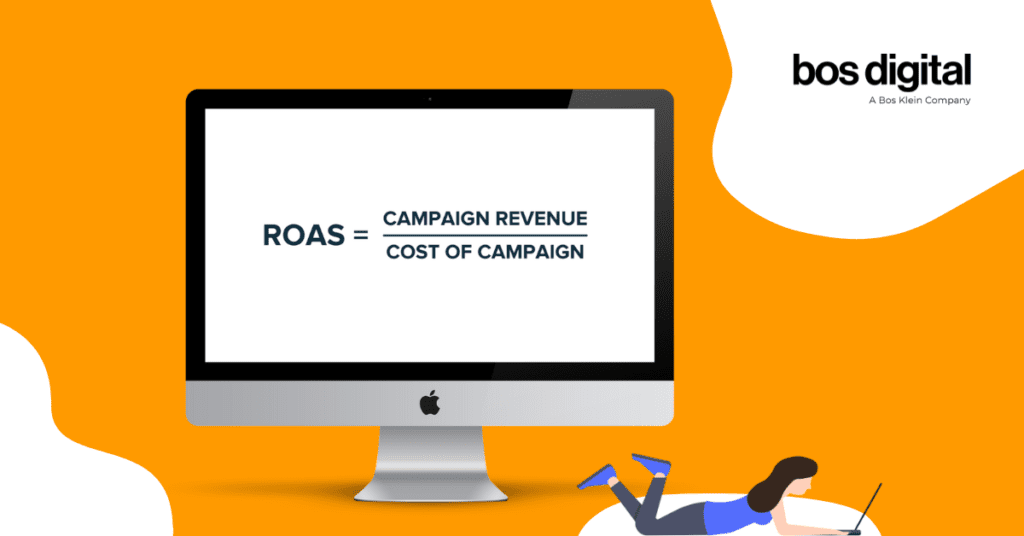ROAS: Getting the Most Out of Your Online Advertising
What gets measured gets managed is particularly important when it comes to online advertising. No business wants to spend money and not get a return on their investment. While ROI is one KPI to track there is also something called return on ad spend or ROAS which we will explore in this article.
Before we jump into understanding return on ad spend let’s distinguish the difference between ROAS and ROI.
ROAS VS ROI

For example, if you brought in $1,000 in revenue from a Google Ad campaign that cost you $250 to run, then your ROAS would be 4:1, representing $4 made for every $1 spent.
Return on Investment (ROI) is a KPI that measures the total return of an overall investment and is used to measure how much money was invested and how much profit was made. It looks at the bigger picture, such as whether your larger marketing strategy is yielding results or not. ROI is affected by other costs, such as labor, order fulfillment, operations, etc.

Simply put:
- ROI = profitability, ROAS = revenue generated by an ad.
- ROI focuses on the long haul, while ROAS is more short-term.
Something to consider:
- Return on ad spend looks at revenue and not at profit so if you have low profit / high revenue products and services this metric when isolated from the bigger picture may give you misleading results.
For each dollar invested in digital search advertising, U.S. advertisers gained about 11 U.S. dollars, making it the medium with the highest return on advertising spending. - statista.com (2018)
Why is ROAS a valuable online advertising metric?
Like we said earlier, what gets measured gets managed. If you’ve invested in online advertising you are already familiar with tracking metrics such as click through rate, conversion rate and cost per click. These are important metrics that help you analyze and optimize your campaigns but without taking return on ad spend into account you could be making inadequate or ineffective adjustments and decisions.
By tracking ROAS throughout an ad campaign, you can see the performance over time. A campaign’s performance can tell you if it’s generating the revenue you expect and if you should keep it running or pivot quickly to preserve your budget. It also allows you to plan for future campaigns based on historical data.
How ROAS changes for each stage of a marketing funnel.
There are different stages of a marketing funnel and depending on your customer journey you can expect to see different return on ad spend for each.
The awareness and education stage of your funnel is where you help potential customers learn of your product or service and educate them on who you are and what you have to offer. Sometimes called top-of-funnel marketing, you can expect to see a lower ROAS as prospects begin to discover and interact with your business.
The interest and consideration stage of your funnel is where the prospect understands who you are and what you offer and is researching how you measure up to your competition. They have interest in your business but have yet to make a decision to purchase. Sometimes called middle-of-funnel marketing, you can expect to see a higher ROAS than in the top-of-funnel stage.
The decision and action stage of your funnel is where the potential customer or client has evaluated all their options and is ready to take action and buy from you. Sometimes called bottom-of-funnel marketing, you can expect to see your highest ROAS here.
Depending on the type of business model you have, there will be different definitions of what is a “good” ROAS at each stage of your marketing funnel. It’s also important to note that return on ad spend can vary by advertising platform.
The challenge of calculating ROAS may be gathering the data.
To calculate ROAS you must know how much revenue your ad is generating which can be tricky. Depending on your customer journey, relying only on last click measurement could miss the majority of the impact of your online advertising. It’s important to establish and track conversion points throughout your ad campaigns with the help of a digital marketing expert.
Key Takeaways
Monitoring return on ad spend, along with other KPI’s of your online advertising campaigns, can help you determine whether your campaign is doing what you expect and allow you to make adjustments to improve the revenue they’re generating.
You also need to understand and establish your particular ROAS goals based on your business model.
For these reasons, if you run paid ads as part of your digital marketing strategy, you will want to track your return on ad spend to constantly optimize your ad dollar’s value.
Are you looking to improve the ROAS and ROI of your online advertising campaigns? Get in touch with us, a marketing agency in Raleigh, to receive a free 30 minute consultation from our digital ad experts.
BOS Digital is a Raleigh digital marketing agency. Our team of subject matter experts understand the complexities of lead generation, digital marketing, communications, and goal-driven marketing.








